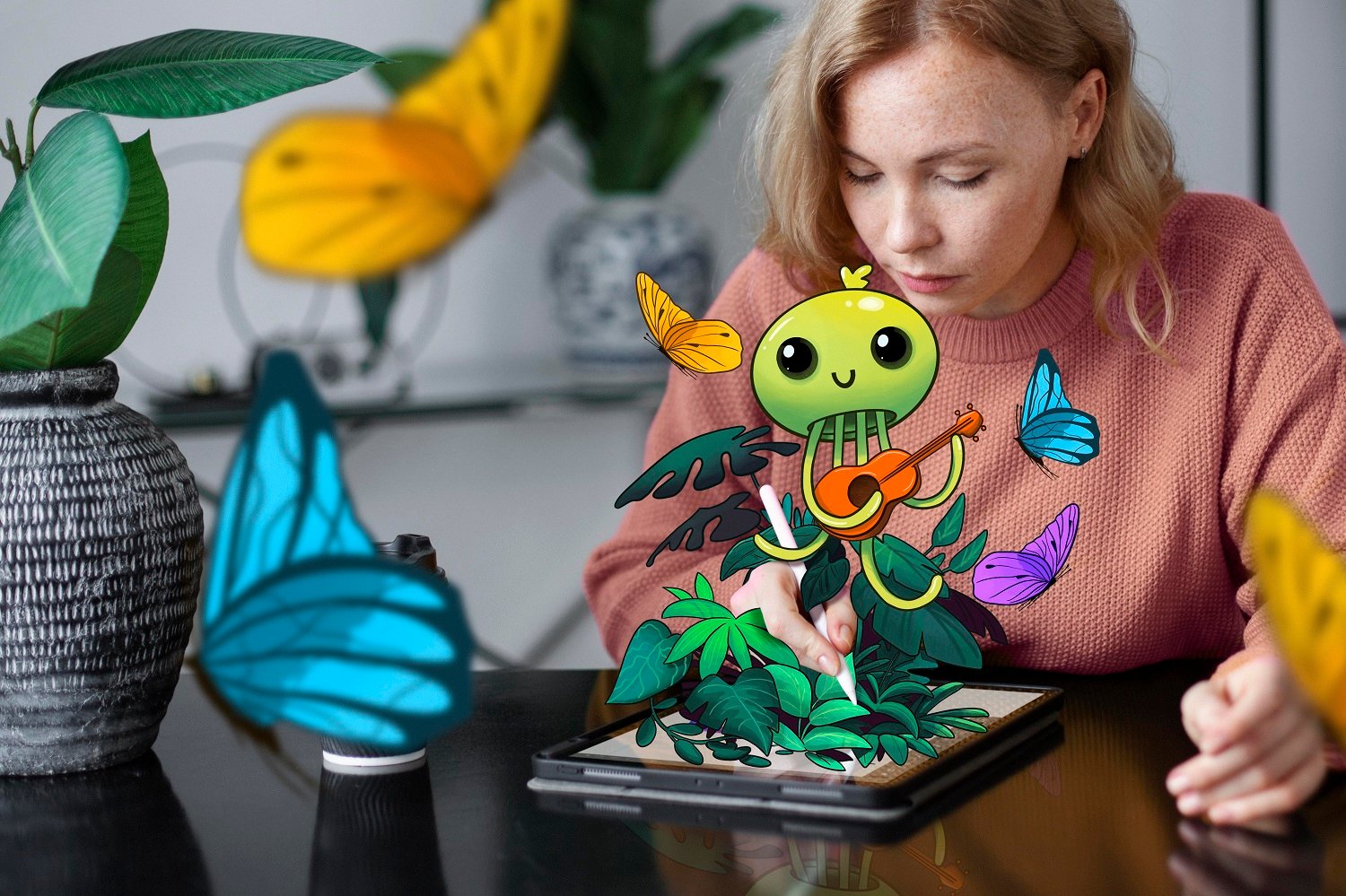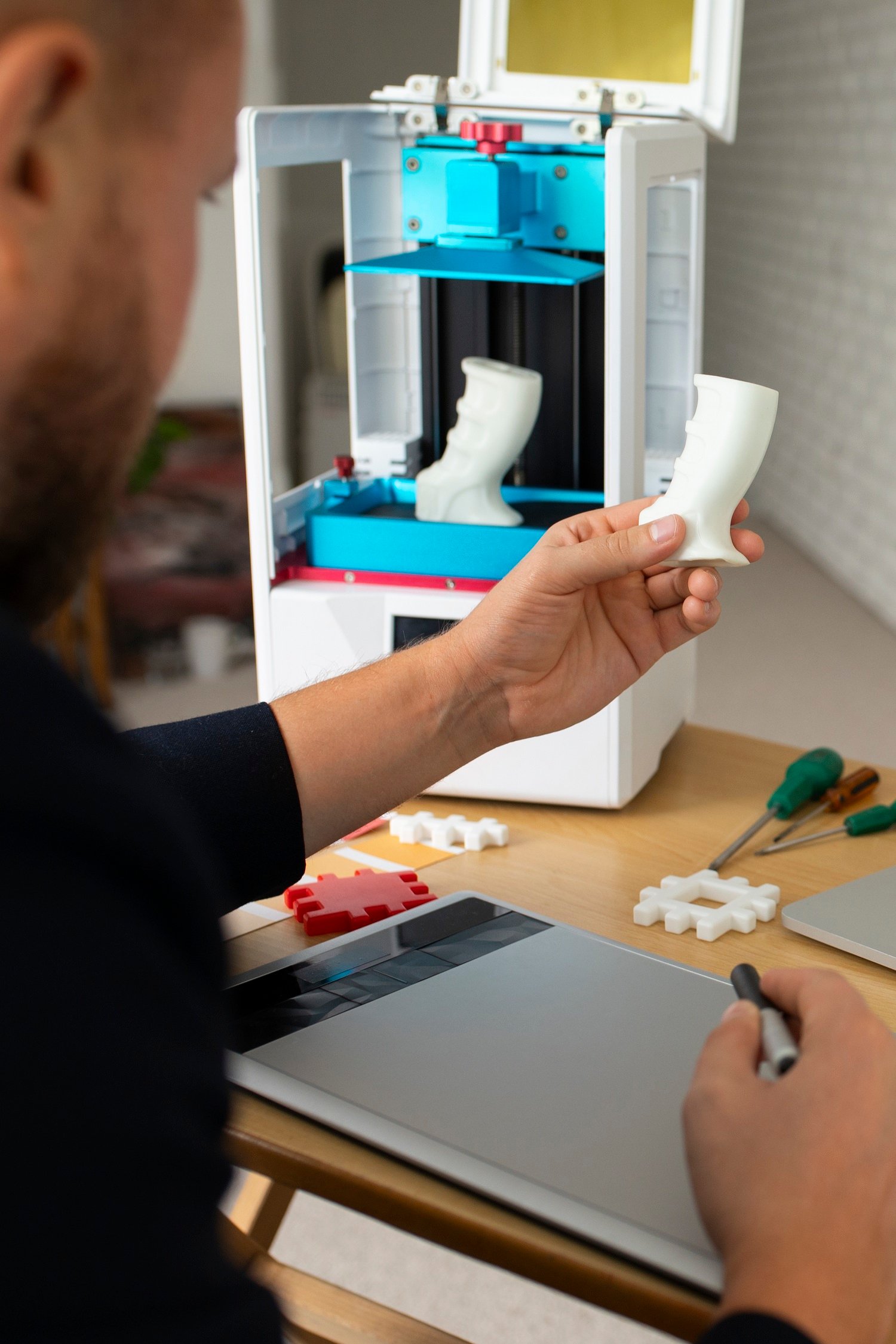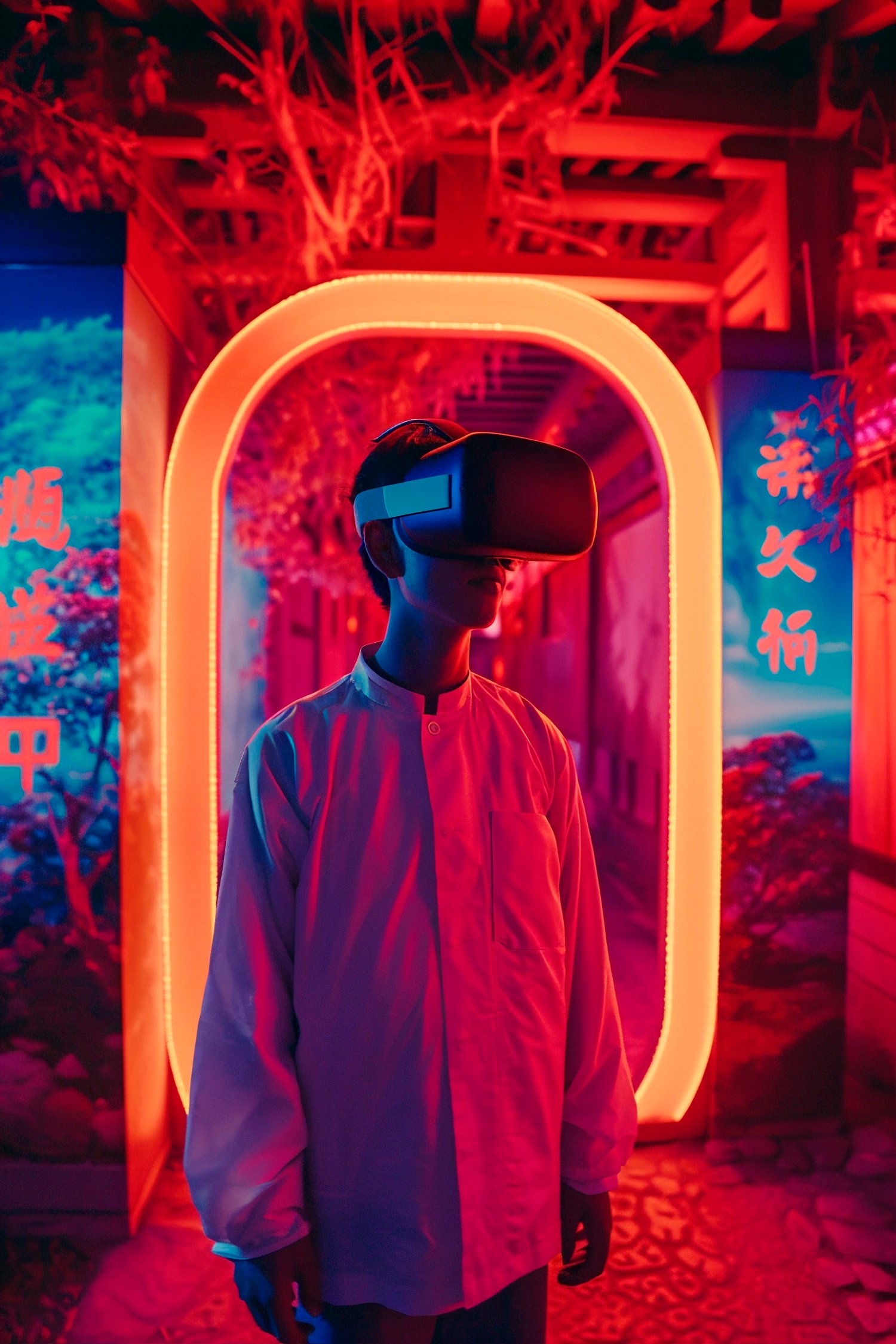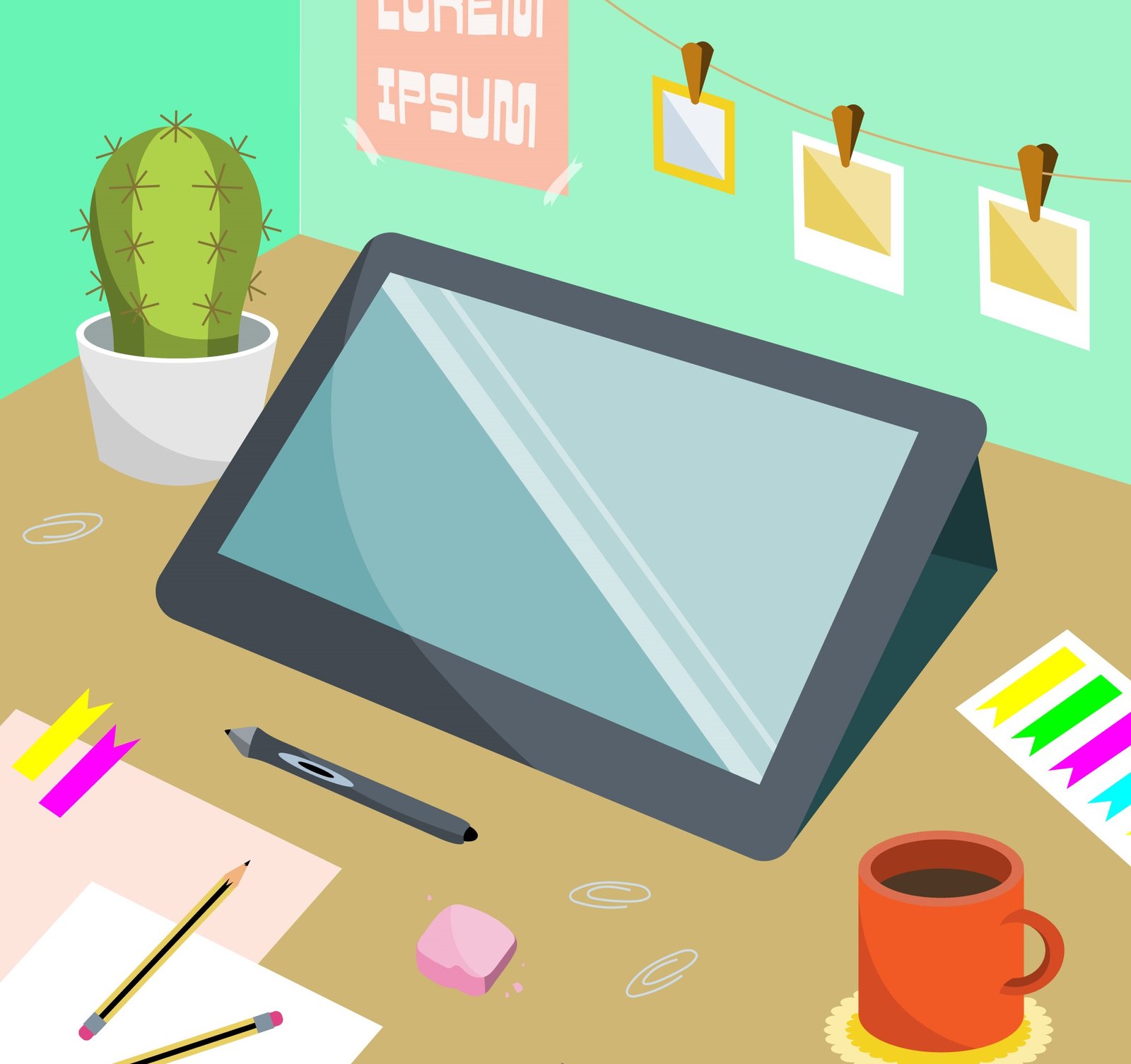How can new technologies be used to create art?
Introduction
Combining art with technology is not only a fad; it’s a transforming movement changing our production, experience, and perspective of art. Technological developments present artists with hitherto unheard-of chances to challenge limits and explore uncharted creative ground as they speed forward. Providing insights and useful suggestions for art lovers, digital innovators, and creative professionals, this blog post will investigate how fresh technology might be employed to generate art. Read THE FUTURE HARDWARE TECHNOLOGY

Overview of New Technologies in the Art World
Art and technology working together have offered avenues for creative expression and originality. Following are some important technologies causing waves in the art scene:
- Digital Art Tools: Programs such as Adobe Creative Suite, Corel Painter, and Procreate have transformed traditional artistic methods. These tools let creators produce complex digital paintings, illustrations, and animations with unprecedented accuracy.
- Artificial Intelligence (AI): Original artworks help artists perfect their techniques, and artificial intelligence systems can produce trend predictions. DeepArt and Google’s DeepDream tools let artists work with AI to create original works, combining machine learning with human ingenuity.
- Virtual Reality (VR) and Augmented Reality (AR): Through their immersive surroundings, VR and AR change our art experience. Artists may paint in three-dimensional space using tools such as Tilt Brush and Quill. AR apps simultaneously bring stationary artworks to life by adding interactive layers that captivate viewers on a fresh level.
- Blockchain and NFTs: Providing digital provenance and ownership, blockchain technology and Non-Fungible Tokens (NFTs) are transforming the art market. This technology guarantees authenticity, lowers fraud, and provides fresh income sources for online artists.
- 3D Printing: This technology lets artists produce real-world sculptures from digital models. Its accuracy and adaptability allow complex designs and constructions to be unattainable with conventional techniques.

Case Studies: How Artists and Innovators Are Using Technology
Refik Anadol: Data Sculptures
One of the first to use data as a main creative medium is Refik Anadol. His creations create captivating visuals out of large databases. Anadol generates data sculptures using artificial intelligence and machine learning, presenting fresh angles on knowledge we sometimes ignore.

Beeple: Digital Collages and NFTs
Mike Winkelmann, sometimes Beeple, has attracted notice for his digital collages and innovative use of NFTs. His record-breaking $69 million sale of digital artwork at Christie’s auction house has brought blockchain technology’s promise to transform art ownership and dissemination front and centre.
TeamLab: Immersive Digital Installations
Large-scale digital displays created by the Japanese art group TeamLab transport visitors into interactive settings. Their works blur the lines between real and digital spheres using projection mapping, motion sensors, and other cutting-edge technologies.

Challenges and Opportunities in Incorporating Technology into Art
Challenges
- Technical Skill and Accessibility: Learning new technologies requires both time and work. Even though digital tools are becoming more user-friendly, there is still a learning curve that can discourage certain artists.
- Cost: High-end technology can be costly, which presents a challenge for up-and-coming artists who might need more money to invest in sophisticated tools and programs.
- Authenticity and Originality: Discussions over the validity and originality of AI-generated art develop as it becomes more and more well-known. Critics and artists wonder whether works made by artificial intelligence have the same worth as human creations.

Opportunities
- Broadened Creative Horizons: Technology lets artists investigate new media and approaches, increasing their creative possibilities.
- Enhanced Audience Engagement: AR and VR, among interactive and immersive technologies, provide new approaches to involve viewers, increasing the accessibility and enjoyment of art.
- Market Expansion: Reaching a worldwide audience and guaranteeing fair compensation, NFTs and blockchain technology provide fresh opportunities for artists to sell and distribute their work.

The Future of Art and Technology: Predictions and Trends
As we look ahead, several trends suggest that the relationship between art and technology will continue to evolve:
- Increased Collaboration: More artists and technologists working together will produce creative ventures beyond the limits of both disciplines.
- Personalization: Hyperpersonalized art experiences made possible by artificial intelligence and machine learning will customize artworks to fit individual interests and inclinations.
- Sustainability: Using environmentally friendly materials and techniques to lessen the impact of artistic creation, emerging technologies will centre sustainability.
- Expanded Virtual Spaces: The metaverse will bring fresh virtual environments where artists can show and market their work, increasing the audience’s reach.
Conclusion:
Technological art increases creative opportunities and enhances conventional techniques. Artists who embrace these developments can extend their horizons, involve viewers in novel activities, and aggressively negotiate the evolving artistic scene.
Knowing and applying new technology can create almost limitless artistic opportunities for those who enjoy art, tech pioneers, and creative professionals alike. Continually challenge the boundaries of art and attempt new activities.
For artistic and technological updates, follow our blog and on social media.
Frequently Asked Questions (FAQs)
How is AI utilized in art?
AI helps artists create new works, refine their styles, and foresee trends. DeepArt and Google’s DeepDream allow artists and AI to create unique works that combine human and machine learning.
What are NFTs, and how do they affect art?
Digital tokens called NFTs (Non-Fungible Tokens) represent ownership of unique content like digital art. They verify authenticity and provenance with blockchain technology, giving digital artists new money sources.
How does 3D printing help artists?
3D printing lets artists make sculptures from digital models with precision and variety. This technology allows sophisticated shapes and structures that are impossible to achieve with standard methods.
Technology in art presents what challenges?
Key hurdles include acquiring new technological skills.
Advanced software and tools’ high cost.
AI-generated artwork authenticity and originality debates.
The future of art and technology?
Artists and technologists will collaborate more, AI will personalize art experiences, sustainability will be prioritized, and virtual venues like the metaverse will be used to show and sell art.
